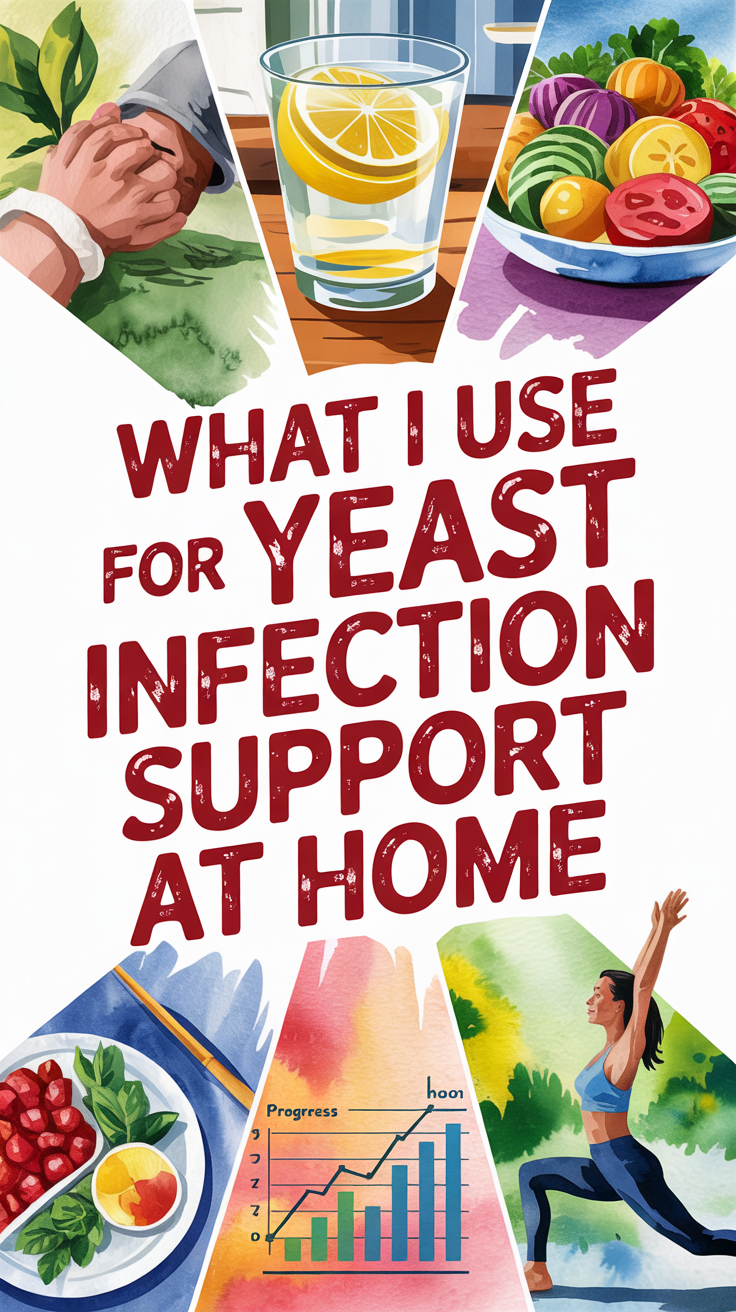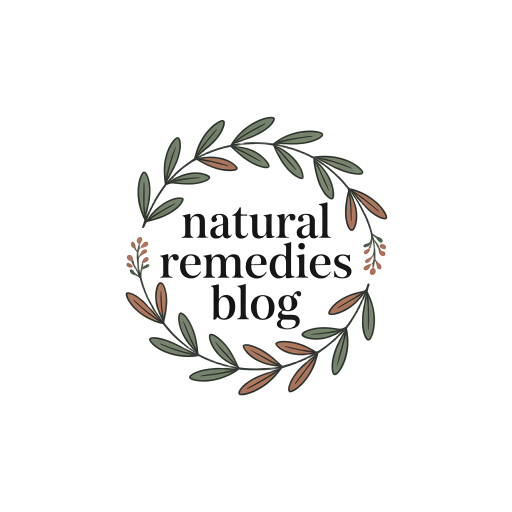What I Use for Yeast Infection Support at Home
For yeast infection support at home, try natural remedies like plain Greek yogurt or oral probiotics to restore your vaginal flora. Coconut oil has antifungal properties that soothe irritation, while apple cider vinegar baths may help reduce Candida levels. Incorporate fermented foods into your diet and limit sugar intake to prevent yeast overgrowth. Stay hydrated and wear breathable cotton underwear to enhance comfort. There’s more to explore on keeping things balanced and healthy!
Understanding Yeast Infections
A yeast infection is a common condition caused by an overgrowth of the fungus Candida, often impacting those assigned female at birth at least once in their lifetime. It disrupts the natural balance of bacteria and yeast in the vagina, leading to symptoms like itching and a thick, white, odorless discharge. Vaginal candidiasis affects most people assigned female at birth at some point, with many experiencing at least two infections. Understanding the triggers for Candida overgrowth can help in preventing future occurrences. Antibiotics and uncontrolled diabetes increase your risk, while irritants like douching can contribute. To find yeast infection remedies fast, consider antifungal medications and over-the-counter treatments for mild cases. Additionally, avoiding irritants and wearing breathable clothing can help prevent future occurrences and maintain your vaginal health.
The Role of Probiotics
Probiotics play a crucial role in promoting vaginal health by restoring the natural balance of bacteria in your microbiome. You can choose from various types, including Lactobacillus, which are highly effective in preventing yeast infections. These beneficial bacteria help control Candida overgrowth in the vaginal environment. Additionally, maintaining an acidic environment can further support the effectiveness of probiotics in preventing infections. Whether you take them as supplements or use yogurt, understanding how to administer these beneficial strains can enhance your overall treatment experience.
Probiotic Types Available
When it comes to managing yeast infections, various types of probiotics can play a crucial role in your treatment plan. Strains like Saccharomyces boulardii are effective against Candida, while Lactobacillus rhamnosus GR-1 and Lactobacillus reuteri RC-14 have clinical backing for vaginal health. You might also consider Lactobacillus acidophilus, known for its benefits in supporting vaginal flora. Some products combine probiotics with fibers like FOS for added effectiveness. Additionally, consuming whole foods like yogurt with live cultures can promote healthy bacterial growth in the vagina.
Benefits for Vaginal Health
Have you ever wondered how certain strains of probiotics can enhance your vaginal health?
Probiotics like Lactobacillus help maintain a healthy balance of bacteria, crucial for preventing infections, including yeast and bacterial vaginosis. Additionally, bacterial imbalances can lead to common gynecological conditions that probiotics may help address.
They support your immune system and reduce inflammation, promoting comfort and reducing irritation.
Additionally, probiotics can help improve vaginal odor and enhance overall vaginal health by increasing lubrication and blood flow.
By keeping a low pH environment, they inhibit harmful bacteria and may even reduce the risk of urinary tract infections.
Incorporating probiotics into your routine can be a powerful way to support your vaginal wellness.
Administration Methods Explained
Wondering how to effectively use probiotics for your vaginal health? You’ve got options!
Probiotics are available in capsules, suppositories, and even live culture yogurts. For quicker effects, try intravaginal capsules, which deliver direct support—insert them like a tampon. Oral intake works too, taking about seven days to show results. Combining both methods can enhance benefits and help maintain a healthy balance. Consider strains like Lactobacillus crispatus for vaginal use and Lactobacillus reuteri for oral. Eliminating triggers is also essential, as it can significantly reduce the need for additional treatments. Always consult your healthcare provider, especially if you’re combining treatments, and remember to use probiotics consistently for lasting effects!
Effective Antifungal Home Remedies
Home remedies can be a valuable ally in managing yeast infections, offering natural solutions that may alleviate uncomfortable symptoms.
Coconut oil’s antifungal properties can soothe itching when applied directly.
Garlic, while effective, may irritate sensitive skin, so eating it can be a better option.
Diluted tea tree oil boasts natural antifungal effects; just remember to mix it with a carrier oil.
Honey, rich in antibacterial properties, can enhance relief, especially when combined with yogurt.
Lastly, boric acid is worth considering, but always consult a healthcare provider first to ensure safety and effectiveness in your treatment approach. Additionally, many kitchen herbs and spices, including oregano and turmeric, possess antifungal properties that can be beneficial in combating yeast infections.
Apple Cider Vinegar Baths
Taking apple cider vinegar baths can offer some antifungal benefits, potentially helping to reduce Candida growth on your skin.
For a safe experience, it’s important to dilute the vinegar and follow specific usage guidelines, like using about 2 cups in a warm bath. It’s also beneficial to note that using raw, unfiltered apple cider vinegar with the mother can enhance its effectiveness. If you’re considering this remedy, be mindful of any irritation and consult a healthcare provider if needed.
Benefits of Vinegar Baths
When exploring natural remedies for yeast infections, vinegar baths—particularly those using apple cider vinegar (ACV)—offer several potential benefits. ACV contains antifungal properties that combat Candida albicans and may alleviate discomfort.
| Benefit | Description |
|---|---|
| Antifungal Action | Helps reduce Candida levels |
| Skin Soothing | Relieves itching and moisturizes the skin |
| Preventative Measures | Creates an environment less hospitable for yeast |
Incorporating ACV into your bath routine could support overall vaginal health. While it’s not a substitute for medical treatment, it may provide symptom relief and proactive care.
Safe Usage Guidelines
Apple cider vinegar baths can be a valuable addition to your self-care routine, but using them safely is essential for effective results.
Always dilute ACV with water to prevent irritation; for sitz baths, use about 4 tablespoons per 2 liters of warm water.
Limit your bath duration to 15-20 minutes and consider frequency—once or twice daily until symptoms improve.
Be cautious not to apply undiluted ACV directly to sensitive skin, and avoid using it for douching.
If you experience irritation, stop immediately.
Always consult a doctor before starting any home treatment for potential yeast infections.
Lifestyle Adjustments for Prevention
To effectively prevent yeast infections, you’ll want to make some thoughtful lifestyle adjustments that enhance your overall health.
Here are three key changes you can implement:
- Limit Sugary Foods: Reducing your sugar intake helps curb yeast growth.
- Increase Probiotics: Incorporate yogurt or fermented foods to balance your gut bacteria.
- Stay Hydrated: Drink plenty of water to support your body’s health and microbial balance. Additionally, consider wearing breathable cotton underwear, as it allows for better air circulation and reduces moisture, which can help prevent yeast growth.
These adjustments not only help maintain your body’s natural defenses but also promote overall wellness, making you less susceptible to infections in the long run.
Make these changes today to foster a healthier lifestyle!
Clothing Choices to Minimize Yeast Growth
Choosing the right clothing is essential for minimizing yeast growth and promoting vaginal health. Opt for cotton underwear, as its breathability and moisture-wicking properties help keep the area dry.
Avoid synthetic materials like nylon and spandex, which trap heat and moisture. Loose-fitting clothing enhances ventilation, reducing warmth and moisture retention.
If you’re exercising, consider moisture-wicking fabrics, but change promptly after sweating. Always wear clean underwear daily and change out of wet clothes quickly to prevent yeast overgrowth.
Prioritize breathable fabrics in sleepwear, and keep the genital area cool to maintain a healthier environment. Incorporating loose-fitting cotton underwear as part of your routine can significantly help in maintaining optimal vaginal health and preventing infections.
Symptom Relief Techniques
Here are three methods you can try:
- Probiotic Support: Consume plain Greek yogurt or oral probiotics with over 5 billion CFUs to restore your vaginal flora.
- Topical Applications: Use coconut oil for its antifungal properties or try a saltwater rinse for soothing irritation.
- Diet Adjustments: Limit refined sugars and stay hydrated while incorporating garlic and fermented foods to support your body’s defenses. Consider using apple cider vinegar in your diet as it helps restore pH balance.
These strategies can greatly enhance your symptom relief efforts.
Cautions With Home Remedies
While home remedies may seem like a natural solution for yeast infections, caution is essential in their use.
Always consult a doctor before trying any remedy to ensure it’s safe and effective.
Be aware that many remedies lack scientific backing, so their effectiveness may be questionable.
Stick to high-quality ingredients to avoid complications, and never use harmful practices like douching.
Monitor your symptoms closely—if things worsen, it’s time to seek professional help.
Lastly, remember certain remedies, like hydrogen peroxide or boric acid, carry potential risks and should be used with extreme caution to prevent irritation or damage. Additionally, some natural remedies can effectively combat fungal overgrowth, making it crucial to understand their proper applications.
When to Seek Medical Help
Even with home remedies, there are times when it’s important to consult a healthcare professional for your yeast infection.
If your symptoms persist or worsen after treatment, it’s crucial to seek help.
Consider reaching out if:
- Symptoms don’t improve after 3-5 days of over-the-counter antifungals.
- You experience severe itching, swelling, or unusual symptoms like sores or bleeding.
- You have recurrent infections, especially four or more times a year, which may indicate underlying health issues.
Don’t hesitate to get professional guidance to ensure proper care and to rule out more serious conditions.
Personal Experiences and Insights
Navigating a yeast infection can be frustrating, especially when home remedies yield mixed results.
You might find that probiotic supplements or Greek yogurt help restore balance, but everyone’s body reacts differently.
I’ve had success with diluted tea tree oil for topical relief, while coconut oil provides moisture.
Paying attention to your diet can also make a difference; reducing sugar and adding probiotic foods might lower recurrence.
Remember to stay hydrated and wear breathable fabrics.
Always consult a healthcare provider before starting any remedy and track what works for you, so you can adapt your approach effectively and safely.

